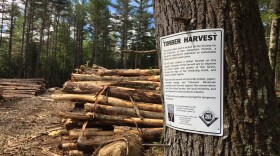Forget about spooky black cats, witches, ghosts and goblins; think about what happens to your pumpkin.
Halloween is indeed well-timed to the season of conspicuous death and decay. Forget about spooky black cats, witches, ghosts and goblins! Instead think about what happens to Jack 'O Lantern left to itself over the next several months…
Visualize your discarded pumpkin tossed into a pile of rotting autumn leaves. In addition to fruit flies, an aerial bombardment of millions of incoming microscopic fungal spores colonize dead plants. The spores begin to grow microscopic thread-like hyphea that break down and digest complex carbohydrates into simpler sugars. The fungi become a vast and interconnected expanding universe of fungal filaments working feverishly at the process of decay.
Fungi have their own biological kingdom equal or greater in diversity to all the species of plants and animals upon which they feed and which, in turn, they feed.
The natural processes of death and decay while unseemly, are critical to carbon cycling back into soils, making these nutrients formerly locked in living tissues available to plants which will feed animals that eventually die and so on.
In ecological terms, the vast, largely unseen, and greatly under appreciated fungal kingdom takes over to provide the biological mortuary for all carbon-based life on our planet.
The scarier Halloween tale is to imagine a biological world devoid of its fungal mortuary.
Fear Not! wandering undead Zombies, but more a dead yet non-biodegradable universe of formerly living things as enduring as plastic or stone.








